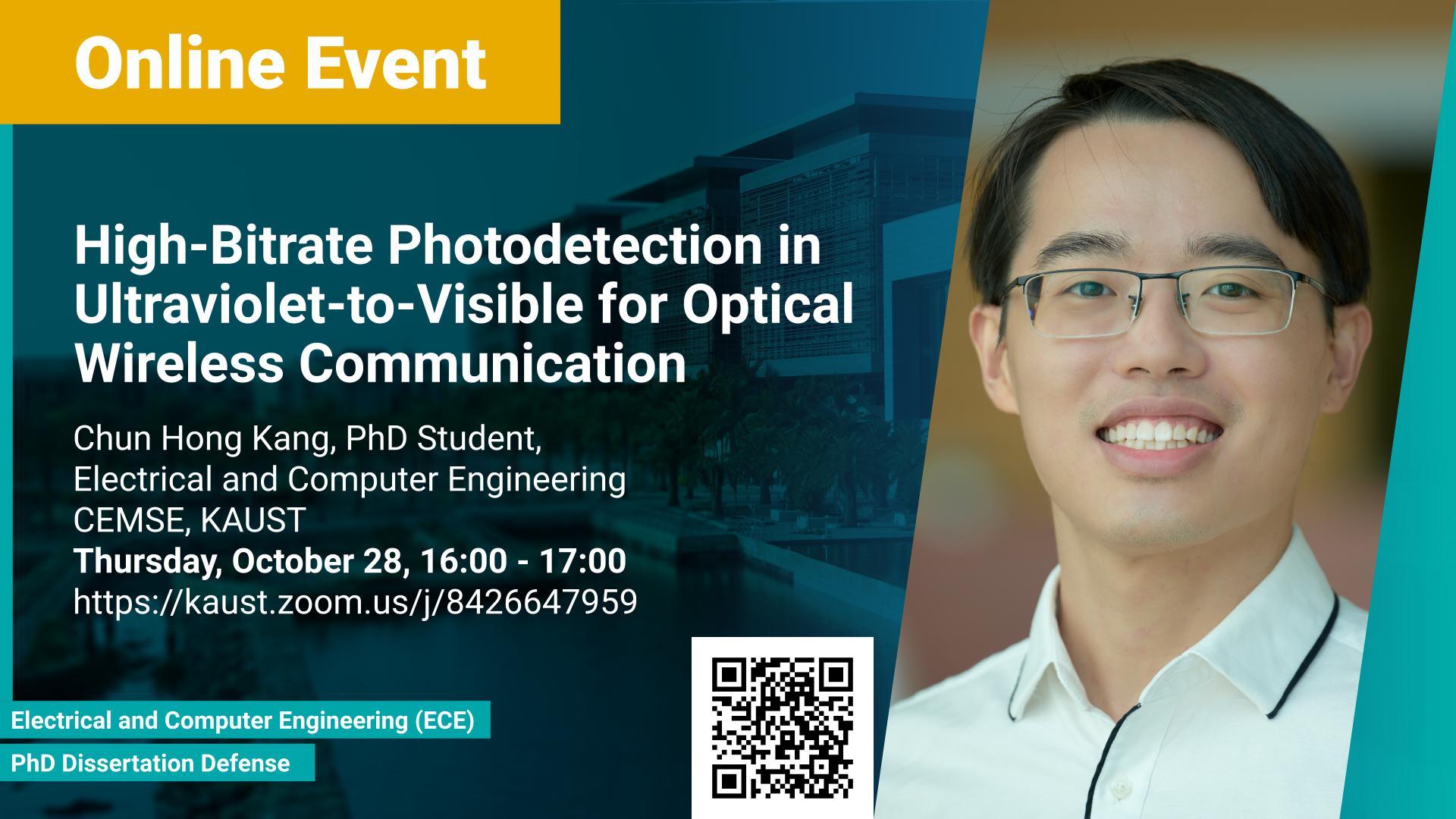Abstract
Optical wireless communication, taking advantage of the unlicensed ultraviolet-to-visible wavelength region of the electromagnetic spectrum, had been coined as the next-generation wireless communication technology and holds promises to deliver a boundless, high-speed, reliable and secured broadband experience. This is largely manifested by the demand for additional channel bandwidth to accommodate the rapid growth of the Internet-of-Things (IoT) and Internet-of-Underwater-Things (IoUT) requiring interconnection on both the terrestrial and underwater settings. Therefore, high-bitrate optoelectronics devices and components forming the transceiver units used in an optical wireless communication system require substantial progression in order to accelerate the development of this paradigm-shifting technology. In this dissertation, we demonstrate and explore a plethora of optical detection platforms, with the core focus to circumvent the existing long-standing issues related to modulation bandwidth, wavelength-selectiveness and solar-blind ultraviolet-C detection found in conventional planar silicon-based optical detectors.
Herein, we present the semipolar group-III-nitride-based micro-photodiodes for enabling up to Gbit/s optical detection in the ultraviolet-to-violet domain. The wavelength-selectiveness nature of the micro-photodiodes enables a bitrate of up to 1.5 Gbit/s based on a power-saving on-off-keying modulation scheme. While it offers a high bitrate for the optical communication link, it is restricted to its detection size and angle-of-view due to the conventional resistance-capacitance (RC) and étendue-limits. Therefore, further exploration into utilizing polymer-based scintillating fibers as a high-speed and near-omnidirectional optical detection platform to cater to various dynamic scenarios in optical wireless communication was also presented. The detection platform formed by the off-the-shelf scintillating fibers enabled near-omnidirectional and large-area optical detection without sacrificing the modulation bandwidth. These investigations paved the way towards relieving the resistance-capacitance limit in conventional planar-based photodiodes, while addressing the pointing, acquisition, and tracking (PAT) issue in underwater wireless optical communication. Subsequently, we also present our investigations in addressing the lack of ultraviolet-C optical detectors in the existing market, which is much sought-after to enable future solar-blind optical communication link, through a novel wavelength-converting mechanism based on halide-perovskite nanocrystals and conventional silicon-based platform. Last but not least, we also shed light on the proof-of-concept demonstration of halide-perovskite-polymer-based scintillating fibers as the high-bitrate and near-omnidirectional optical detection platform. Our studies combinatorically addressed the existing inadequacy for high-bitrate photodetection and could play a significant role in progressing the technology forward, based on bottom-up material and devices innovation, to offer a reliable internet connection to the future highly-interconnected society.
Brief Biography
Chun Hong Kang is a Ph.D. Student in Electrical and Computer Engineering at Photonics Laboratory, King Abdullah University of Science and Technology (KAUST). Prior to joining KAUST, he obtained his B.Eng. and M.Sc. in Electrical and Electronics Engineering from Universiti Teknologi PETRONAS. His current research focuses on the development of high-speed optoelectronics materials and devices for their eventual applications in optical wireless communication. He is also a student member of IEEE, SPIE and OSA.

